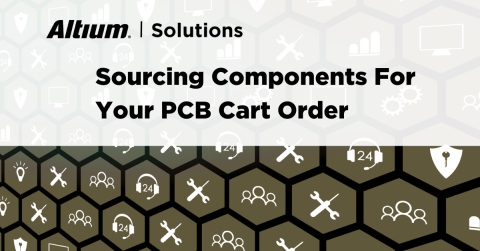Learn to Manage Your BOM Inventory for Smooth Production Runs
I’ve recently gotten into fermenting kombucha (which, I am well aware, is about the most hipster thing I could have said), and I ordered a handful of different-sized mason jars online in order to store it. Mason jars are reliable as ever but with the increasing popularity of home-fermenting and brewing, they’re one part of an industry trying to optimize how we store. During my ordering process alone, I had twelve tabs open of marginally different container and storage products.
So, of course being the designer that I am, I thought about how much of a pain it would be to organize the orders of dozens to even hundreds of marginally-different shaped and sized glass jars. Assuredly, the bill of materials (BOM) here would have to get ultra-specific with its product descriptions. Yet another reason to be grateful for BOM software that does this painstaking organizational work for me.
With the fast-pace of technology and engineering innovation, smart component management software couldn’t be more necessary. Even the greatest design team with the greatest product will run into problems without the proper organizational structure in place. Being able to manage BOMs for any and all of your designs efficiently will be able to resolve potential manufacturing problems before they even occur.
Approved Supplier List
While one can dream, it is highly unlikely that your design will encompass a sole supplier in which all your parts originate from. You will likely encounter multiple instances where you were notified late in the game of a supplier’s stock shortages, or discontinuing a component used. You might be able to repair the situation by reaching out to your network for other supplies, but then you may run into the problem of not having ensured their product quality before.
There is a slew of problems that could go wrong in this process, too, such as being unable to meet manufacturing demands or failing to communicate in-turn as well. For the sake of sanity, let’s imagine you are lucky and lock-down an overseas supplier who can deliver your parts on time—phew! But what can we implement to mitigate this issue for us to refer back to when this (inevitably) happens again?
Keeping a list of approved suppliers will give us a great starting point when in a design change pinch. This is a very handy feature that you should be on the lookout for if you decide to invest in some BOM management software. Thousands of approved and vetted suppliers under one roof. Easy peasy. But what happens when the part that your approved supplier carries is about to phase out? What is the best method of comparing and contrasting different options?
End of Life Components
If you’re looking to pump out as many units as can be sold, then the production stages of your design will hopefully implement more than once (when sales of course skyrocket). So what is your plan for your second production run? Third, fourth, fifth? Unfortunately, it isn’t as simple as contacting the manufacturer and saying “Another round for us!” Again, in our ever-changing world of technologies, parts phase out and die.
It is a component eat component world. Imagine that your design is loved by the public and they want more of it, fast, but your manufacturer comes back to you and tells you that one of the parts you used in your first production run is phasing out and will no longer be carried by them. Keeping another database of similar parts (by approved suppliers) would be an excellent solution to your issue.
But do you have the time and effort to construct such a system within the time crunch you’re under? Many pieces of BOM software out there are geared to give you just that: databases of parts that you can easily pull from with each property listed and able to give you a side by side comparison. But the biggest concern facing companies is not necessarily part inventory, nor is it keeping approved lists of suppliers, it’s simply the cost to produce.
Tracking Cost
Now, let’s say your design has gone through a handful of relatively smooth production runs, sales are healthy, and people want more. You know that is taking a lot of manpower just to manage the multitude of BOM’s your company is now pumping out due to slight product revisions in order to hit niches in the marketplace. The structure of your BOM management is getting big and there’s no slowing in sight. Essentially, your designs are thriving.
But among other issues of part and supplier shortages, there are a handful of parts that you feel are overpriced and killing your profit margin potential. When part prices fluctuate, will you again have to go to the drawing board in yet another dimension of your already multi-dimensional BOM management? Similarly here, utilizing a more active style of BOM management software will ease your efforts.
Pricing features within your (ideal) software will actually track prices of your current approved supplier, updated parts database. This will not only give you insights into when price blowouts happen but can provide you with the tools to decipher opportunities to save on your current part selection. Now, your team can identify overpriced components, deep dive into your designs, and realize immense potential savings. Not bad for a BOM tool.
Managing Our Findings
Although these three potential issues only skim the surface in terms of BOM management issues, they should shed vast amounts of light on the complexity that you should be expecting when expanding your BOM to any level (especially when in production), and including the management of multiple and interconnected BOMs.
When in search of BOM management systems (whether it be internal recordkeeping or external software), keeping an eye out for features that mitigate approved supplier lists, active part databases, and price tracking will put you on a path towards success in BOM management.
If BOM management software is the path you’d like to explore, Altium’s Active BOM is a fantastic feature within Altium Designer that will assist in the mitigation of many BOM management issues.
To discuss further topics involved in BOM management, talk to an Altium expert today.









